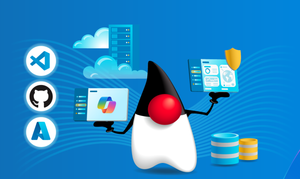
Unleashing the Power of AI with Semantic Kernel and Kernel Memory
In the dynamic world of AI, having the right tools can transform your development journey from a daunting task into an exhilarating adventure. Enter Semantic Kernel and Kernel Memory—two powerful allies that can help you build intelligent, responsive, and scalable AI applications. Let’s explore these tools and discover how they can revolutionize your projects.
What is Semantic Kernel?
Imagine having a toolkit that not only simplifies the integration of AI models into your applications but also supercharges them with advanced capabilities. That’s Semantic Kernel for you—a lightweight, open-source development kit designed to make your AI dreams a reality.
Why Developers Love Semantic Kernel
Enterprise-Grade Reliability: Trusted by industry giants like Microsoft, Semantic Kernel is built to be flexible, modular, and secure. It includes features like telemetry support and responsible AI hooks, ensuring your applications are robust and trustworthy.
Streamlined Automation: Semantic Kernel excels at automating business processes. By combining prompts with existing APIs, it translates model requests into function calls and seamlessly passes results back to the model. This means you can automate complex tasks with ease, saving time and reducing manual effort.
Modular Magic: One of the standout features of Semantic Kernel is its modularity. You can integrate your existing code as plugins, maximizing your current investments. Plus, with out-of-the-box connectors, you can effortlessly integrate various AI services, making your applications more versatile.
Future-Proof Flexibility: Stay ahead of the curve with Semantic Kernel’s ability to connect your code to the latest AI models. Swap out models without rewriting your entire codebase, ensuring your applications remain cutting-edge.
Supported Languages:
Semantic Kernel supports multiple programming languages, including C#, Java and Python, making it accessible to a wide range of developers.
What is Kernel Memory?
Now, let’s talk about Kernel Memory (KM)—a multi-modal AI service that takes data handling to the next level. Kernel Memory specializes in efficient indexing of datasets through custom continuous data hybrid pipelines, supporting Retrieval Augmented Generation (RAG), synthetic memory, prompt engineering, and custom semantic memory processing.
Why Kernel Memory is a Game-Changer
Efficient Data Indexing: Kernel Memory uses advanced embeddings and large language models (LLMs) to index datasets. This enables natural language querying and retrieval of information, making it easier to build applications that understand and respond to user queries effectively.
Retrieval Augmented Generation (RAG): RAG enhances the ability to generate responses by retrieving relevant information from indexed data. This is particularly useful for applications that require accurate and contextually relevant responses, such as chatbots and virtual assistants.
Synthetic Memory: Kernel Memory supports the creation of synthetic memory, allowing AI models to remember and utilize past interactions. This feature can significantly improve the user experience by making interactions more personalized and context-aware.
Seamless Integration: Kernel Memory is designed to integrate smoothly with Semantic Kernel, Microsoft Copilot, and ChatGPT. This enhances the data-driven features in your applications, making it easier to build comprehensive AI solutions.
Supported Languages:
Kernel Memory can be integrated directly into your .NET applications or you can run it as a container and call it from any language via a REST API calls.
Accelerating AI Solution Delivery
Using Semantic Kernel and Kernel Memory together can greatly accelerate the time to deliver new AI solutions. Here’s how:
Rapid Prototyping: The modular and extensible nature of Semantic Kernel allows you to quickly prototype and test new features. You can integrate existing code and leverage out-of-the-box connectors to build functional prototypes in a fraction of the time it would take using traditional methods.
Efficient Data Handling: Kernel Memory’s efficient data indexing and retrieval capabilities ensure that your AI models have quick access to the necessary information. This reduces latency and improves the performance of your applications, allowing you to deliver solutions faster.
Scalability: Both Semantic Kernel and Kernel Memory are designed to scale with your application. This means you can start small and expand your solution as needed, without worrying about performance bottlenecks or data management issues.
Future-Proofing: By using these tools, you can ensure that your AI solutions remain up-to-date with the latest advancements in AI technology. This reduces the need for frequent rewrites and allows you to focus on adding new features and improving user experience.
Conclusion
For developers new to AI, understanding and utilizing tools like Semantic Kernel and Kernel Memory can be a game-changer. These components not only simplify the development process but also enhance the capabilities of your applications, making them more intuitive, efficient, and scalable. By leveraging these tools, you can build AI applications that truly stand out and deliver exceptional user experiences.
Resources:
Introduction to Semantic Kernel | Microsoft Learn
